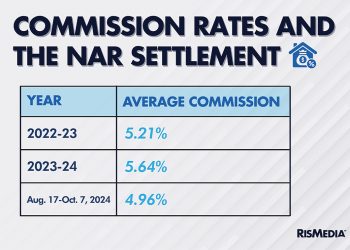The latest data from realtor.com® on the January housing market shows what we expected: homebuyers were off to the real estate races right out of the gate this year.
Last month, the typical U.S. home sold faster than in any prior January, according to the realtor.com’s Monthly Housing Report released this week. Compared to January’s national pace, homes sold even more quickly in the 50 largest U.S. metros, with listings flying off the market in 36 days or less in Nashville, Tennessee, San Diego, California, San Jose, California, Denver, Colorado and Raleigh, North Carolina.
Key findings
Days on market
- The typical U.S. home spent 61 days on the market in January, moderating from the December pace (54 days). However, homes spent less time on the market than in January 2021 (-10 days) and compared to the same month in 2017-2020, on average (-29 days).
- Homes spent less time on the market than the national rate in the 50 largest U.S. metros, at an average of 52 days in January. Southern metros posted the biggest yearly declines in time on market, down 10 days across the region as a whole and led by Miami (-29 days), Orlando, Fla. (-24 days), and Raleigh, N.C. (-17 days).
- In January, time on market increased over last year in just four large markets: Hartford, Conn. (+10 days), Minneapolis (+2 days), and Richmond, Va. (+1 day) and Washington, D.C. (+1 day).
Inventory challenges
- Nationally, the inventory of active listings was down 28.4% year-over-year in January, worsening from last month’s rate (-26.8%). Although there were fewer for-sale homes than in January 2020 in all of the 50 largest metros, more than half (26) posted smaller inventory declines than the national rate.
- New listings lagged behind prior year’s levels for the second consecutive month in January, down 9.1% nationwide. However, realtor.com Weekly Housing Trends show the annual rate of new listings declines improved steadily over the course of the month. If this trend continues, buyers may start to see more options ahead of the competitive spring season.
- Among the 50 largest U.S. metros, 19 experienced smaller new seller declines than the national rate in January. Additionally, four markets posted annual new listings gains: Cleveland (+7.6%), Orlando, Fla. (+2.3%), Indianapolis (+1.6%) and Houston (+0.9%).
Home price growth
- For the second month in a row, the U.S. median listing price held at $375,000. Listing prices increased at a slightly faster annual pace in January (+10.3%) than in December (+10.0%), but the change was smaller than from November (+8.6%) to December.
- Relative to the national rate, home prices posted smaller yearly gains (+6.1%) in the 50 largest U.S. metros, partially due to inventory gains in smaller-sized homes. Price growth was similar on a square foot basis, up 11.8% year-over-year in large metros and 13.5% year-over-year nationwide.
- Listing prices grew at a double-digit annual pace in the southern (+11.2%) and western (+10.0%) regions, which dominated the top 5 list of markets with the biggest annual home price increases: Las Vegas (+35.3%), Tampa, Fla. (+28.7%), Austin, Texas (+28.2%), Orlando, Fla. (+25.0%) and Miami (+24.8%).
The takeaway
“We’re forecasting a whirlwind year ahead for buyers and, if January housing trends are any indication, 2022 competition is already heating up. Homes sold at a record-fast January pace, suggesting that buyers are more active than usual for this time of year,” said realtor.com chief economist, Danielle Hale. “But it’s a different story on the other side of the closing table, with new seller listings continuing to decline in January. Factors like Omicron uncertainties could be causing sellers to hesitate even when they know housing conditions are favorable. Another key barrier is the inventory ‘chicken-and-egg’ dilemma that may vex sellers who are also buying: Do you list now when home shoppers are hungry for more options, or do you wait for more inventory to hit the market in the spring? Ultimately, only you know the best time for your family to make a move, but preparation is key to acting quickly when the right opportunity comes along.”
To read the full report, click here.











